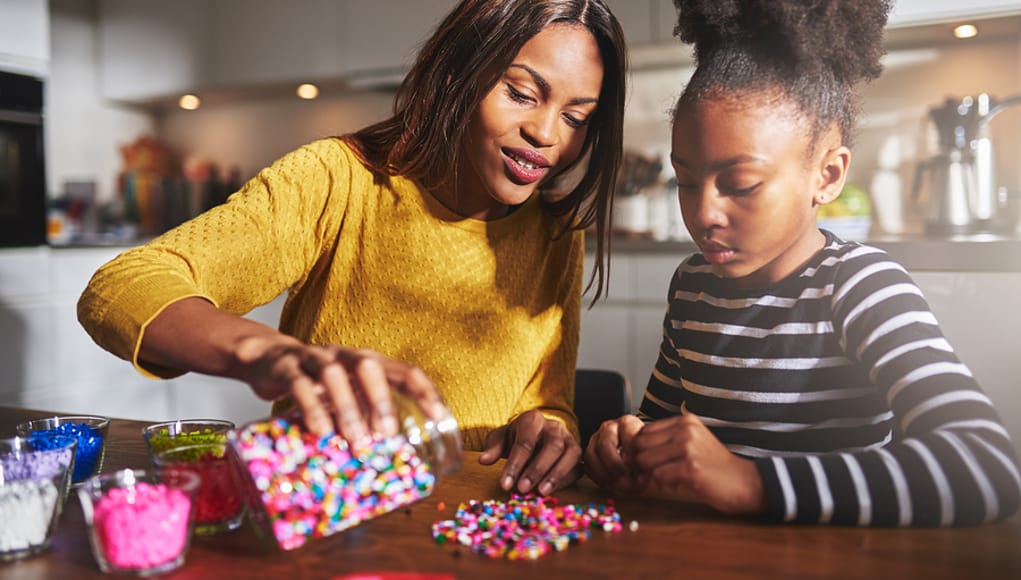A Parent’s Call to Action: Leveraging Personalized Learning for Your Child

By Karla Phillips and Ace Parsi
From the day of diagnosis, parents of students with disabilities begin the long journey of paving paths through a world designed for the mythical “average” person.
In education, we grow accustomed to challenging traditional systems to serve our children so they too can reach their full potential. But the daily struggle is made more difficult because of a significant problem baked into the basic design of traditional education: these systems are set up to serve the “average learner,” who doesn’t exist.
This fact permeates every subsequent question, from the philosophical, “What is an accommodation?” to the practical, “Why can’t my kid get into this AP class?” And, unfortunately, this reality too often leads parents and educators to realize their greatest fear—a disengaged or frustrated learner.
Like any parent, moms and dads of students with disabilities have a common goal. We want a system to meet our kids where they are, support their individual needs, and still provide opportunities for growth, exploration, and engagement. We want an approach that takes the focus off the “program” and places it on the student. We want learning that is customized to meet our student as an individual—not an average.
This process of understanding students more fully and translating that into creating learning environments that support and empower students is the essence of how we would define personalized learning. Personalized learning has the potential to meet this aspiration and in the process—maybe, just maybe—move special education from focusing on a deficit-based label to a focus on students’ unique needs, strengths and interests.
Unfortunately, parents of students with disabilities are often wary of lofty goals and promises—they’ve been let down before. But proactive family engagement is a crucial step to translate the potential of personalized learning into reality. Personalized learning for students with disabilities will demand that we change the paradigm from five educators/specialists on one side of a table with parents on the other to a collaborative circle, where both groups work to understand each other’s’ frustration and needs and act to support each individual child.
Often, as NCLD has found in its exploration of personalized learning for students with disabilities, the challenges and opportunities these two groups experience are two sides of the same coin. This fact can play out in any number of opportunities personalized learning may present to students with disabilities, from extending learning beyond the classroom to emphasizing greater engagement and supports.
We’re excited to see personalized learning expand across the nation. And to ensure children with disabilities get the most out of school and districts’ efforts around personalized learning, we suggest parents ask educators and administrators six questions:
- Where in your strategic plan do you explicitly cover the needs of students with disabilities? If the needs of students with disabilities are not incorporated into the strategic plans, it reflects that they are an afterthought.
- Where does the strategic plan leave my child’s IEP? The protections in the IEP can work with the provisions in Personalized Learning Plans to account for students’ needs, skills, and interests.
- How are general and special educators in the school prepared to implement these new approaches to meet my child’s needs? Teachers need new skills and mindsets to implement personalized learning effectively and additional skills to do so for students with disabilities.
- What are the intervention and support systems in place if my child struggles? Personalized learning provides the potential for customized and continuous supports, but a system must be in place to deliver on that potential.
- How will you maintain high expectations for all students? Personalized learning should not and cannot lead to lower expectations in the name of flexible pacing and learning opportunities.
- How will you communicate the success and challenges of my child to me and what is my role in contributing to my child’s success? Schools and districts must have a plan to communicate with and engage families in the success of their children.
Personalized learning can represent a transformational shift in how we approach education for all students. However, if not done right—if it’s another initiative done to students and parents rather than with them—personalized learning cannot meet its full potential. Answering these questions in a collaborative way is an essential precursor to ensure the personalized learning strategy meets its potential. As parents and advocates for our children’s learning, we stand ready to help.
For more, see:
- What Parents Need to Know About Project-Based Learning
- Supporting Autistic Students with Powerful Family Engagement
- Decisions, Decisions: Deciding Which School is Right for Your Child
Karla Esparza-Phillips is the Policy Director for Competency-Based Education at the Foundation for Excellence in Education. Follow her on Twitter: @azkarla
Ace Parsi is the Personalized Learning Partnership Manager at the National Center for Learning Disabilities (NCLD). Follow them on Twitter: @ncldorg
Stay in-the-know with all things EdTech and innovations in learning by signing up to receive the weekly Smart Update.






0 Comments
Leave a Comment
Your email address will not be published. All fields are required.